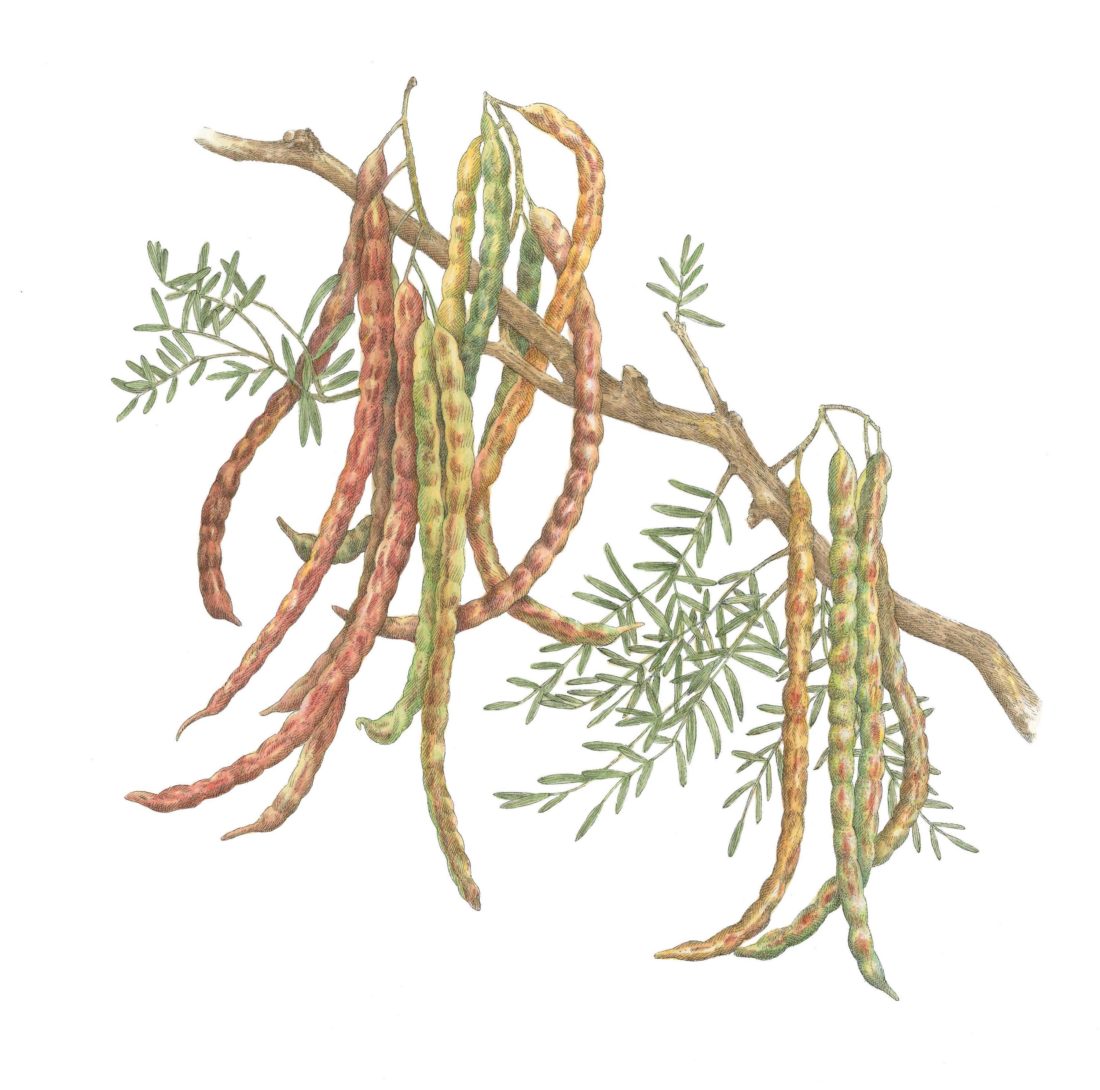Mention you’re a fan of mesquite and folks will assume they’re about to hear a treatise on good smoke. But Steve McHugh, chef-owner of Cured in San Antonio, is among a growing group of food obsessives who are using the beans, rather than the wood, in their kitchens. “We have this idea of mesquite being this bitter, smoky barbecue thing,” he says. “But it can be really sweet. It’s chocolaty, it’s coconutty, it’s caramelly, almost graham cracker–ish.” When McHugh moved from New Orleans to San Antonio almost a decade ago, he dug into the history of the area’s food. “I started down this path of trying to learn what people ate before the Spanish arrived,” he says. “There was cactus, and there were rabbits and snakes and small pigs, and occasional buffalo. But those aren’t things people can survive on.” He discovered that what nomadic tribes could survive on were mesquite beans. As Spanish and westward-expanding American settlers arrived and brought their own crops with them, the beans were largely forgotten; now chefs like McHugh are bringing them back. Mesquite bean pods, which drop from the short, scrubby trees in August and September, need to be dried and ground into a powder. “It’s such a versatile ingredient,” McHugh says. “I can use it in savory applications, I can use it in sweet applications, I can use it like a spice, I can use it like a flour.” You can find mesquite flour online via Amazon or seasonally from Texas mills such as Barton Springs. At home, substitute it for a portion of the flour in most recipes for baked goods. Or try it as a natural sweetener—mix a couple of tablespoons into chili, smoothies, or even your morning coffee. “There is something rounded about the flavor,” McHugh says. “It’s just really special.”
THE CHEF RECOMMENDS:
Mesquite Flour Crackers
Yield: 4–6 servings
Ingredients
1 cup mesquite flour
1¾ cups all-purpose flour
2 tbsp. caraway seeds, toasted and cracked
2 tbsp. coriander seeds, toasted and cracked
2 tbsp. lemon zest
1 cup American lager such as Pabst Blue Ribbon
1 tsp. salt plus more for sprinkling on dough
1 cup olive oil
Preparation
Preheat grill to medium-high. Using a mixer fitted with a dough hook, combine the flours, caraway, coriander, and lemon zest on low speed. Slowly add the beer and season with salt. Place dough ball in a bowl three times its size and cover with a damp towel in a warm place until it doubles in size, about 45 minutes. Divide dough into four equal pieces and roll each out (by hand or with pasta machine) until ⅛-inch thick. Cut into desired shapes (about 2 inches square). Brush dough with oil, sprinkle with salt, and grill about 2 minutes per side, or until there are deep grill marks and the dough stiffens. Serve warm with cheese and charcuterie.








